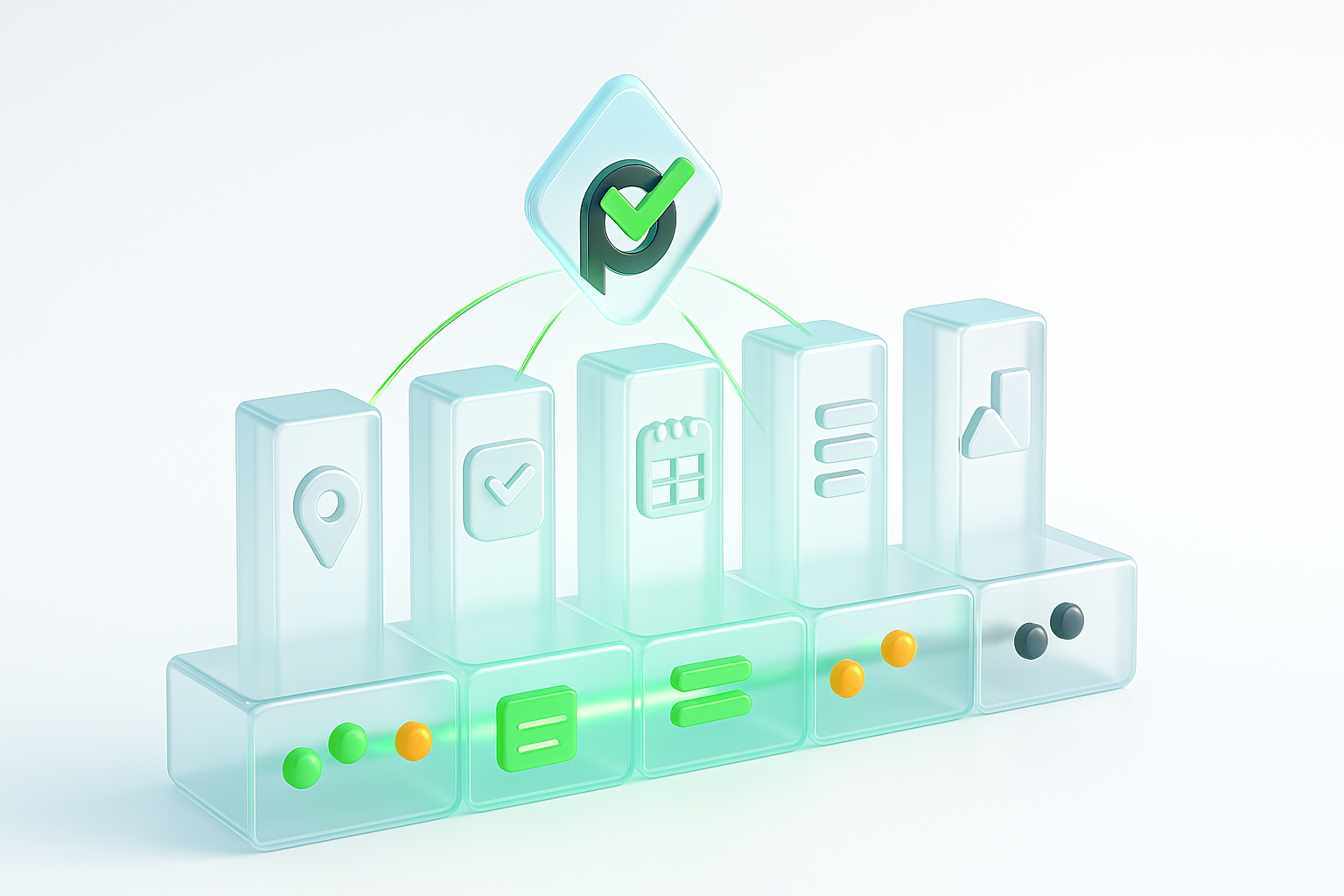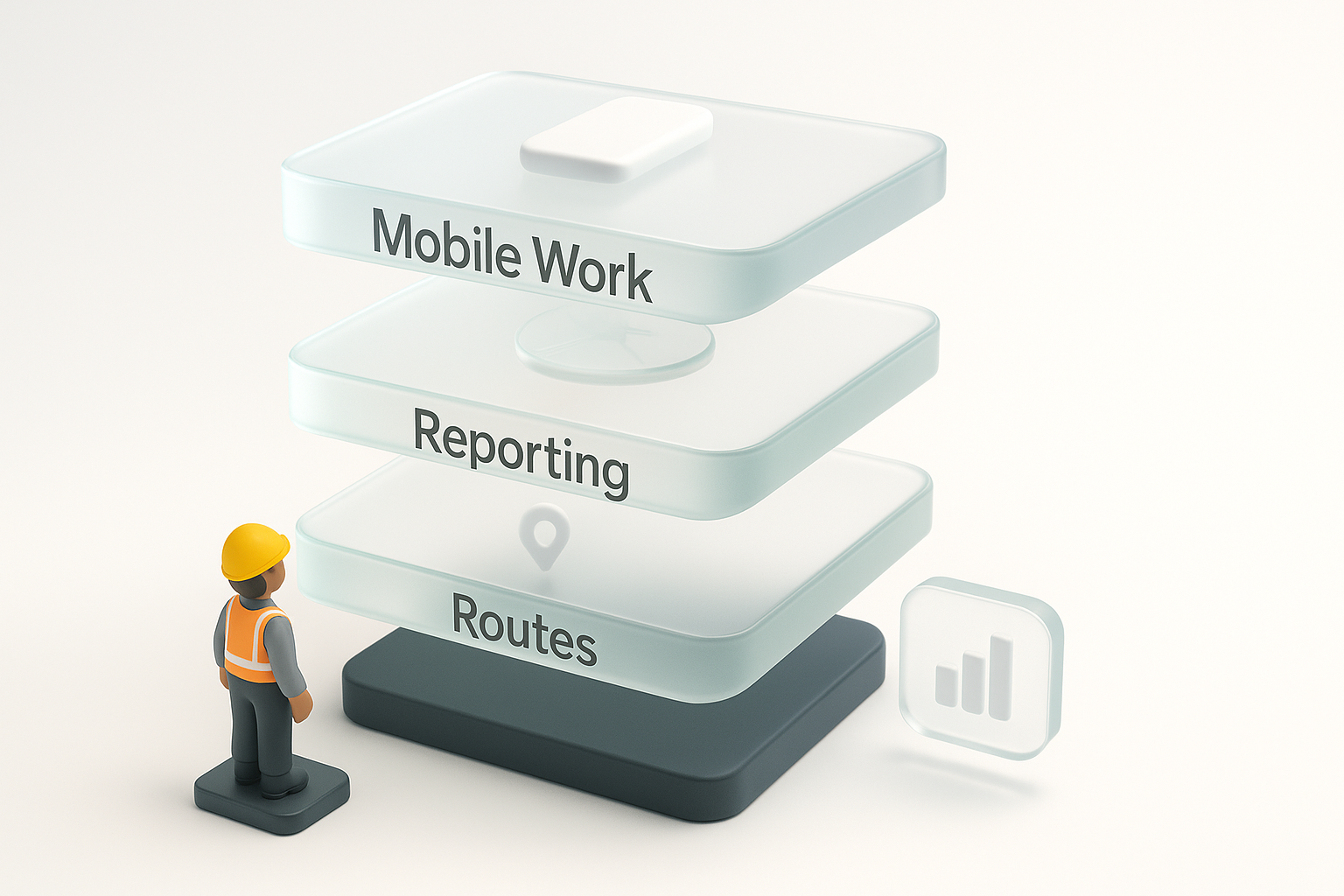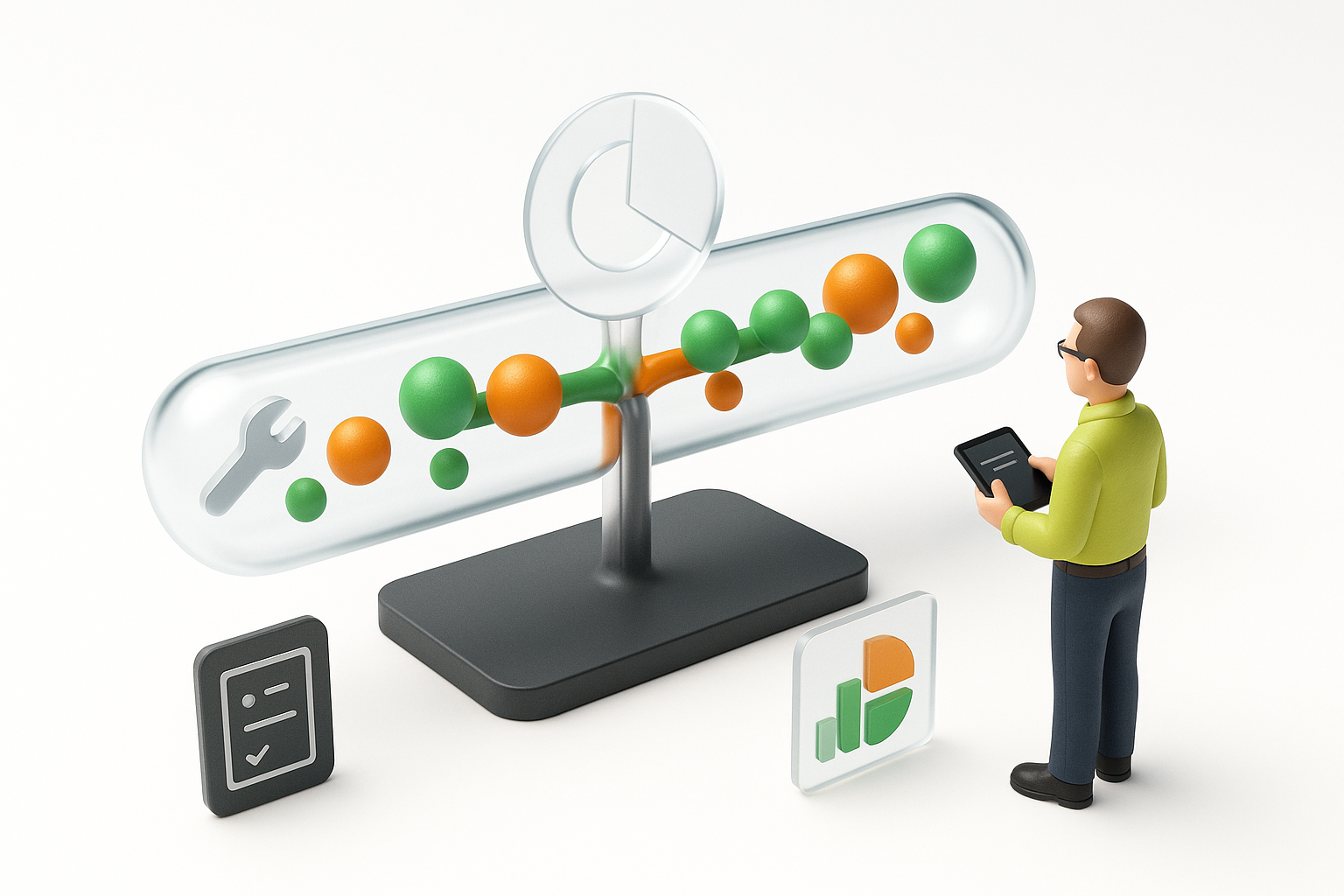
Field service work has always depended on coordination — people, schedules, equipment, customers waiting for results. What’s changed in the last few years is the speed at which all of this moves. Jobs stack up quickly, expectations rise even faster, and managers can’t afford to waste hours sorting out unclear updates or missed appointments. That’s where the benefits of field service management software start to show themselves: teams don’t spend their day chasing information that should already be there.
For many companies, adopting digital tools began as a convenience but gradually became something closer to necessity. Modern platforms bring essential field service management software features — dispatching, job tracking, reporting — into one place, keeping the workflow intact even when the day gets hectic. Businesses that once relied on manual coordination often notice immediate gains simply because fewer details slip through unnoticed.
Owners and operations leaders also want proof that their efforts pay off. They’re looking for clear numbers: time saved, errors reduced, repeat visits prevented. The field service management software benefits connected to analytics and automation help put that information on the table. And once those insights are visible, improving margins or strengthening field service software ROI stops being guesswork.
In this article, we look at the advantages of field service management software, how these systems function in real conditions, and why so many service companies now rely on digital coordination to stay competitive. The details vary, but the direction is consistent: smoother operations, better control, and results you can measure — not approximate.

Field service management software brings order to work that rarely follows a perfect schedule. It connects the office with teams in the field, turning scattered updates into a steady flow of information that managers can actually rely on. At its simplest, the system tracks who is doing what, where they are, and how each job is moving. The everyday tasks — assigning work, updating statuses, sending instructions — stop depending on memory and handwritten notes.
Most platforms combine several moving parts into one environment. You’ll see dispatching tools, calendars, route planners, checklists, and a mobile app that technicians use on-site. These field service management software features work together quietly in the background, reducing friction. Instead of calling to confirm every update, managers see progress appear automatically. Instead of guessing which job should go next, the system suggests the most realistic sequence based on location, duration, and availability.
For technicians, the workflow becomes simpler. They receive tasks on their phones, open a job, and have everything they need in front of them — instructions, photos, notes, materials, customer details. No digging through old messages or waiting for someone at the office to resend information. And because the software records what happens on-site, the team avoids disputes about arrival times, completed steps, or missing documentation. That transparency is one of the quieter benefits of field service management software, but it’s often the one that has the biggest impact.
Behind the interface is a system built to reduce interruptions. Schedules update without delay, routes adjust when a job takes longer, and managers see issues early instead of hearing about them hours later. The result isn’t flashy; it’s simply steadier work. Fewer surprises. Less manual chasing. And a workflow that holds together even when the day becomes unpredictable.

When field work depends on quick decisions and clear communication, even small delays can slow an entire day. Software helps pull those loose pieces together. It organizes schedules, keeps instructions visible, and reduces the chance that important details get buried in long message threads or forgotten during a busy shift. Many teams notice that the moment information stops scattering, the work itself feels lighter.
The core field service management software benefits tend to show up in different forms depending on the company. Some businesses see shorter turnaround times; others see fewer mistakes or a smoother handoff between the office and the field. For managers, the biggest change is usually visibility — being able to follow progress without interrupting the team every hour. For technicians, it’s having a single source of truth instead of juggling different tools and conversations.
###Better Scheduling and Resource Optimization Good scheduling depends on timing, but it also depends on clarity — knowing who’s available, which jobs are urgent, and how long each task usually takes. Software brings these pieces together and reduces the guesswork that often slows planning down. Assignments land where they make the most sense, not just where there happens to be an opening. For many teams, this single change cuts back on unnecessary travel, uneven workloads, and the familiar last-minute scramble to cover missed appointments.
And in practice, one of the real benefits of field service management software shows up here: the system quietly balances the day before the team even heads out. Routes shift as new information comes in, gaps in the schedule are easier to fill, and managers don’t spend half the morning reworking tasks that were already assigned. The result isn’t perfect order — just a workday that runs smoother and wastes far less energy.
When technicians receive clear instructions before they even arrive on-site, most jobs start moving sooner. They’re not waiting for someone at the office to send a missing detail or confirm a step they weren’t sure about. And when updates travel in the opposite direction just as quickly, managers can spot delays early enough to rearrange the schedule without disrupting the rest of the day. Small moments of clarity save more time than most people expect.
When updates arrive the moment a job moves forward, managers stop working in the dark. They can see which tasks are underway, which ones stalled, and where the next delay might surface. There’s no need to call for status checks or hunt through old messages to piece together what happened. The system shows progress in a way that feels closer to watching the day unfold rather than reviewing it once it’s already over.
The reporting side adds another layer. Photos, notes, timestamps, completed steps — everything is logged automatically, which makes it easier to understand why a job took longer or why a particular route slowed down. Managers don’t have to guess. They can read the pattern directly from the data and adjust the schedule before a problem spreads. It’s a simple change, but it often makes the whole operation more predictable.
Clear communication usually matters more to customers than the actual length of the job. When they know who’s coming, when to expect a technician, and what has already been done, trust builds quickly. Software helps keep those details consistent. Arrival times, job notes, and completed steps stay visible, so clients aren’t left wondering why a visit is late or whether something was missed. The experience feels smoother simply because information isn’t hiding behind phone calls or unanswered messages.

When businesses talk about ROI in field operations, they’re usually trying to understand one thing: where the time and money actually go. Software makes that picture clearer. It reduces the hours spent coordinating tasks, cuts back on repeated visits, and helps managers react earlier when a job begins to slow down. None of these improvements look dramatic on their own, but they add up quickly when a team handles dozens of appointments every week.
Stronger returns often come from visibility. When work is tracked accurately and in real time, planning becomes steadier and decisions feel less like educated guesses. That’s where field service management software features start influencing the financial side. Better routing, cleaner documentation, and reliable status updates shorten the gaps between jobs and reduce the friction that usually turns into hidden expenses. Even small adjustments — a technician finishing sooner than expected or a route shifting mid-day — can change how much a business gets done in a single shift.
Automation cuts expenses mostly by removing the little tasks that quietly eat time. Technicians don’t spend their morning sorting out missing addresses or checking whether the job they’re heading to still needs them. Managers stop rewriting schedules after every small delay. These interruptions seem harmless when you look at them one by one, but over weeks they add up to hours of lost work.
Another part of the savings comes from fewer mistakes. When instructions, checklists, and job details update on their own, the team avoids duplicate visits, mismatched materials, and the kind of errors that typically require a second trip. Each avoided correction is money kept inside the business instead of spent fixing preventable issues.
For many companies, these changes are the real advantages of field service management software. They cut away the slow, manual habits that hold teams back and replace them with a rhythm that’s easier to maintain. Costs drop partly because the software is doing more — but mostly because people finally stop doing work they shouldn’t have to handle in the first place.
ROI in field service becomes easier to read once the numbers stop hiding in spreadsheets. Software shows how long each job actually takes, how often technicians return to fix the same issue, and where delays keep forming. When those patterns become visible, managers can trace which parts of the workflow move efficiently and which ones quietly drain the budget. It’s a clearer way to judge performance than relying on memory or occasional check-ins.
Most of the measurable field service software ROI comes from steady, repeatable improvements rather than big jumps. A few minutes saved on every job, fewer repeated visits, routes that waste less fuel — these changes grow into something noticeable over weeks, then months. The gains aren’t abstract; they show up in faster turnaround times, better use of staff hours, and a workday that costs less because fewer things go wrong.
The financial impact grows as the system becomes part of the routine. Once scheduling, reporting, and routing run smoothly day after day, the business can take on more work without stretching the team thin. It doesn’t require a large expansion — just fewer interruptions and a steadier flow of jobs. Over time, that stability becomes its own savings.
Scalability follows naturally. When the workflow is organized, adding new technicians or taking on larger contracts doesn’t create the usual chaos. The structure is already there, and the software absorbs the extra load without forcing managers to rethink every process from scratch. If you’ve ever looked at your team’s day and wondered where the time goes, the answer is usually in the small interruptions — the status checks, the schedule fixes, the quiet delays no one notices until they pile up. Field service software takes much of that weight off the team. With a platform like Planado, schedules, updates, and field data stay in one place, making it easier to see where efficiency is lost and how much smoother the day can run when those routine tasks stop getting in the way.

The right field service management software features help businesses scale by making daily operations easier to control and far more predictable. When dispatching, tracking, communication, and reporting work together in one system, teams spend less time coordinating and more time completing revenue-generating tasks. Companies grow faster because they can handle higher job volumes with the same resources, reduce friction between office and field staff, and make decisions based on real data instead of guesswork.
Smart dispatching reduces delays by matching the right technician to the right job at the right time. Routes adjust automatically when plans change, so field teams avoid unnecessary travel and spend more time on actual work. This alone lifts efficiency because every job reaches the best-fit specialist without extra back-and-forth.
Field service management software features often include built-in analytics that turn daily activity into clear, usable insights. You can see which jobs take longer, where delays repeat, and which teams consistently perform above expectations. These patterns help you make decisions faster because they rely on real data instead of assumptions.
With this visibility, managers can adjust workloads, improve training, or update processes before small issues grow into bigger problems. It’s a simple shift, but it gives companies a more confident, evidence-based way to guide long-term performance and growth.
When field service tools connect directly with job management and billing systems, the entire workflow becomes smoother. Information moves automatically from task creation to scheduling, completion, and invoicing, so you no longer chase missing details or wait for someone to update a spreadsheet. It keeps teams aligned and reduces the small errors that often slow operations down.

Job management tools make daily operations easier to control, especially when teams are constantly moving between sites. They keep tasks organized, reduce manual coordination, and help managers see where work is slowing down and why. These systems also support better planning by showing how jobs progress in real time, which helps teams stay aligned even on busy days.
Job management software gives teams a clear sense of what needs to be done first and what can wait. Tasks update as technicians move through their day, which keeps managers informed without constant check-ins. This visibility helps prevent delays and ensures that urgent work gets the attention it needs.
For teams that spend most of their time in the field, having tools that adjust to real conditions makes a noticeable difference. Job management software allows technicians to review tasks, upload photos, add notes, and complete checklists from any location. It reduces the back-and-forth with the office, keeps projects from stalling, and ensures that daily work flows with fewer interruptions. These benefits of job management software become especially important when teams are juggling tight schedules or high workloads.
Field service operations are shifting quickly, and the tools behind them are evolving just as fast. Companies no longer want simple task trackers — they look for systems that anticipate issues, guide decisions, and help teams move with more confidence. That direction is shaping the future of field service management software in a noticeable way.
AI is gradually finding its place in field service work, not as a futuristic add-on but as a way to notice things people tend to overlook. When the system compares dozens of past jobs, routes, and timing patterns, it becomes easier to spot recurring trouble — crews that always hit traffic on the same stretch of road, tasks that run long for reasons no one has quite pinned down, or seasonal spikes that arrive earlier some years than others. These small signals give managers enough context to prepare instead of reacting after the fact.
Process automation adds its own quiet advantage. Instead of relying on someone to update every status or shuffle schedules by hand, the software handles these bits as the day unfolds. A technician finishes early, a part is marked unavailable, a route changes — the system records it right away. Managers aren’t hovering over spreadsheets, and teams don’t lose time passing information around. The flow of work steadies because less depends on manual catch-up.
Field service tools used to focus on logging tasks and checking them off. Now they do something more useful: they help managers read situations as they develop. When the system can show how busy each crew is, where delays are forming, and which jobs should move first, it becomes easier to weigh options without guessing. Instead of scrolling through lists and juggling details from memory, managers get a clearer picture of what matters right now — and what can wait.
Planado brings the field service management software benefits into day-to-day operations by keeping every job connected to real conditions in the field. Technicians work through the mobile app, where each task includes the client’s details, the checklist, attached files, and required materials — no extra back-and-forth with the office. As they move through the job, technicians leave a clear trail: timestamps, photos, comments, completed steps, and signatures when needed.
This steady flow of updates gives managers something most tools promise but rarely deliver — a live, accurate picture of what’s happening, not a summary filled in at the end of the day. That visibility changes how planning decisions are made. Delays, early finishes, bottlenecks, and recurring issues surface naturally because the data arrives without gaps. Managers can reassign work on the spot, adjust routes, or shift priorities before small problems spread across the schedule. Over time, the patterns become clearer: which crews handle specific tasks faster, which locations often cause slowdowns, which job types consistently need extra preparation. Instead of reacting, teams operate with a quiet sense of control — the kind that comes from seeing the full context, not fragments. Planado doesn’t force a new workflow; it strengthens the one companies already use by making every part of the process more predictable and easier to manage.
Field service work moves quickly, and the margin for error is small. Software helps teams keep up by showing what’s happening in the field, tightening communication, and removing the busywork that used to slow everything down. The result is simple: fewer surprises, clearer workflows, and decisions that come from real data rather than guesswork. When the routine tasks stop pulling attention away, managers finally have room to think about growth instead of constant recovery. If you’re exploring ways to make your operations more predictable — and to get lasting value from the time your team spends in the field — Planado is a practical place to start. It brings scheduling, tracking, and job management into one steady system, so you can see the work clearly and run your business with more confidence.
##FAQs How does field service software improve customer satisfaction? It helps customers get faster, more predictable service because technicians arrive with the right information and fewer delays. Real-time updates also keep clients in the loop instead of waiting for callbacks. When communication feels smoother, trust builds naturally.
What are the key features of field service management software? Most systems include scheduling tools, task tracking, mobile apps for technicians, and reporting dashboards. These field service management software features give managers a clear view of what’s happening in the field. With everything in one place, teams spend less time searching for information.
How can field service software increase ROI for small businesses? It reduces wasted time, prevents double-work, and lowers the cost of manual coordination. Small businesses feel the impact quickly because even small efficiency gains show up in margins. For many teams, it’s the fastest path to improving field service software ROI.
What are the advantages of field service management software over manual methods? Manual tools fall apart when the workload grows or when jobs change unexpectedly. Software keeps schedules updated automatically and makes field activity visible in real time. That clarity leads to fewer mistakes and a steadier workflow.
How does job management software improve productivity? It organizes tasks, priorities, and job details so technicians don’t waste time figuring out what comes next. Clear visibility reduces back-and-forth communication and keeps the day moving. This is one reason the benefits of job management software matter so much in busy field teams.
What metrics can be used to measure field service software ROI? Teams often look at overtime reduction, faster job completion, fewer scheduling conflicts, and higher first-time fix rates. These numbers reveal whether the system is helping work move with less friction. Over time, they show how much value comes from switching to a more connected workflow.
